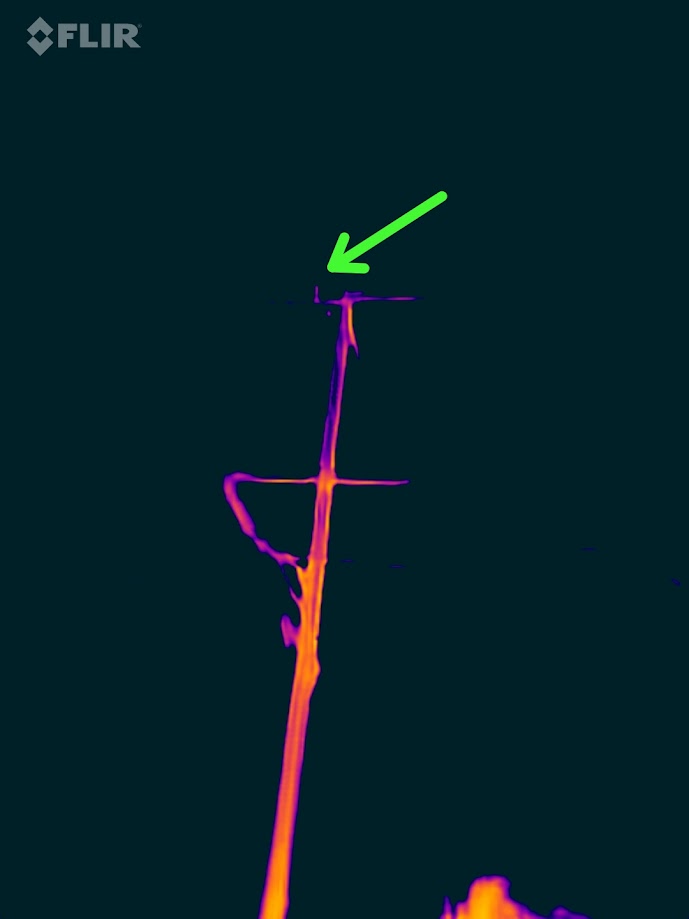If you follow this blog, you are probably aware already of the difficulties I’m having operating on HF due to powerline noise apparently being generated by PG&E in my neighborhood, but I thought it would be a useful exercise to summarize the story so far in one place. In this way, it is easy to see what has already been done, what’s been tried, and so-on, to hopefully save some time in chasing down and resolving the actual problem.
Here’s what is known about the offending signal so far:
- It’s precisely 120 pulses of noise per second
- These pulses line up naturally with the peaks of a 60 Hz sine wave, such as that employed by electrical utilities
- It’s a wideband mess, the kind you would expect from an accidental spark-gap transmitter.
- Quite prominent on the 80m band, at peak intensity, it blankets everything from 1.5 to at least 54 MHz, which includes portions of the AM broadcast band, WWV on 2.5, 5, 10, 15, and 20 MHz, and even part of low-VHF OTA TV
- It varies significantly in intensity, though it seems generally to be worse in the late afternoon; however, it can start at any time of day
- It vaguely seems to be influenced by environmental conditions (like temperature, humidity, solar intensity, wind), but cannot (as yet) be entirely predicted
- Strong wind gusts seem to modulate the amplitude of the noise and sometimes the noise starts when the wind picks up in the afternoon; based on this, I feel fairly confident the noise source is exposed to the elements
- It is a local phenomenon whose intensity is strongest in one particular intersection
- It’s relatively weak and can only be received for about 180 meters in any direction
- It is not coming from my own house
- It does not appear to be coming from the PG&E substation about half a mile north of our house, nor the high tension powerlines about a quarter mile to the east
And here are things I’ve done while trying to chase it down:
- Turned off electrical power to my own house to ensure that’s not where the noise originates
- Put a portable radio and antenna in the car and driven away from the sound to verify whether it’s local or atmospheric (it’s local)
- Driven around the neighborhood with a portable radio, one block at a time, looking for the area where the noise is strongest
- In the general area indicated by the car trip, walked the area with the same portable radio and found the intersection with the strongest noise
- From this intersection, walked slowly away from the area of greatest intensity and observed a general reduction in noise with increasing distance
- Informed PG&E on March 12 that there appears to be a problem, and which pair of utility poles are present at the intersection where the noise originates
- Taken a thermal photo of one of the suspect utility poles and observed that possibly one insulator is warmer than the others at the top, but this is inconclusive
- Wrote software to sample audio from my radio tuned to 3.500 MHz LSB, analyzing the intensity of 120pps pulse noise relative to the noise floor, and automatically posting charts to this site
- Submitted informal complaints to the FCC and CPUC regarding PG&E’s persistent inaction and stonewalling
- Contacted the RFI email at ARRL
PG&E has done:
- After receiving my CPUC complaint about my ticket being ignored for a month, sent one general tech without any specialized equipment to investigate, who predictably was unable to do anything about the problem other than take some notes from me about the nature of the trouble
- Nothing else
I’ve attempted to follow up with PG&E on the following dates: March 20, March 28, April 5, April 11, April 25. I’ve advised service folk to whom I’ve spoken that this kind of RFI could be a leading indicator that some piece of equipment is approaching a failure point, and this has fallen on deaf ears. The culture at PG&E appears to be one of “wait and do nothing until it completely fails” which kind of explains how we ended up with so many wildfires caused by PG&E equipment in California.
At this point, I believe I’ve exhausted everything that I can do. My data collection and charting will continue, looking for some kind of pattern or predictability that might aid PG&E technicians in tracking down the trouble, if only they’d make any serious attempt to do so at all.






